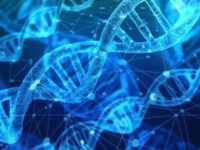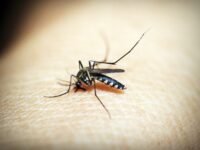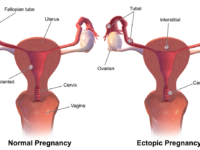While wrinkle creams and wheatgrass shots may be all the anti-aging rage, the real secret lies within all of us. Put simply, aging is the slow progression of DNA damage. As cells replicate, approximately 100 base pairs of DNA are lost in what is known as the end-replication problem. Organisms have long developed a counter for this: telomeres and telomerase.
Telomeres are repeating sequences of nucleotides found at the ends of chromosomes, and telomerase is the enzyme that regenerates them. Together, they protect the contents of your coding DNA so no important sequence or function is lost via cell replication. This may seem too good to be true, but telomerase is only active in regular germ cells in order to protect the vital DNA that produces offspring and not active in the regular somatic cells in your body tissue. This means that while germ cells can replicate without losing any DNA, regular body tissue will slowly lose DNA until it becomes too damaged to replicate, a stage called senescence.
Together, they protect the contents of your coding DNA so no important sequence or function is lost via cell replication.
After about 60–80 population doublings, all somatic cells will reach a stage of senescence — they are still allowed to perform their metabolic functions but are unable to replicate. This effect shows up as regular signs of aging, including but not limited to weakened tissue, less efficient bodily functions, and wrinkles. Some cells, like the cancer cell, have achieved immortality and never become senescent.
Scientists have correlated telomerase activity to the longevity of these immortal cell lines, as close to 95 percent of immortal cell lines and 85 percent of cancers show sustained telomerase activity. The 5 percent that don’t utilize telomerase instead utilize the alternative lengthening of telomeres technique (ALT) that prevents telomere shortening by looping the broken DNA segment back onto previous nucleotides to repair the telomeres, which works because of the telomere’s repeating nature.
Ever since the role telomerase plays in the survival of cancer was discovered, scientists have been seeking ways to stimulate telomere regeneration in regular cells. And recently, those efforts have paid off.
In 2011, authors of a year-long deep-sea diver study hypothesized that their high-pressure environment would induce oxidative stress on the divers, which is suspected to be the leading factor in telomere shortening. Instead, they were greeted with data that showed telomere elongation in both the participants’ blood cells. The authors wrote their conclusion in tones of disbelief, with their primary explanation for their results being “a random or systematic technical measurement inaccuracy.”
Scientists are turning back the clock on the building blocks of our being. If we could do that to one cell, could we potentially turn back the clock on an entire tissue? An entire organ? Or even an entire organism?
On the contrary, the Tel Aviv University Sackler School of Medicine proved that this was no mistake. A group of 30 individuals were exposed to a treatment called hyperbaric oxygen therapy (HBOT), which is 100 percent oxygen delivered under high pressure, similar to the conditions the scuba divers were subject to. Previously, the same research team found that HBOT was able to enhance cognitive performance in aging adults. It also had previously been used as treatment for non-healing wounds or situations involving tissue death. Despite their small sample size and lack of control group, this preliminary research showed staggering results of successful, in vivo telomere lengthening like that of the divers’ study. After regular HBOT sessions, leukocytes of the participants had experienced telomere lengthening of up to 38 percent, with a decrease of up to 37 percent of senescent cells.
Scientists are turning back the clock on the building blocks of our being. If we could do that to one cell, could we potentially turn back the clock on an entire tissue? An entire organ? Or even an entire organism?
Will this be worth pursuing as a vanity project? For now, no. At least not for most of us. Most of this regenerative treatment will most likely go towards helping those with genetic aging disorders. But it raises the question — have we unlocked the secret to biological “immortality?” And would the advent of this discovery lead us to a dystopia synonymous to the designer baby world of the movie “GATTACA,” or would this lead us to a cutting-edge cure for aging?
Mechanisms of Ageing and Development (2011). DOI: 10.1016/j.mad.2011.01.005.
Aging (2020). DOI: 10.18632/aging.202188.
Biomolecules (2020). DOI: 10.3390/biom10060958.The FASEB Journal (2015). DOI: 10.1096/fj.14-259531






